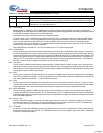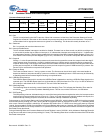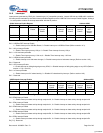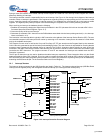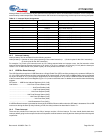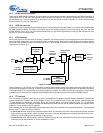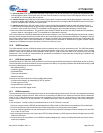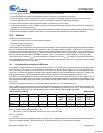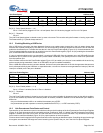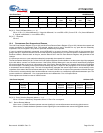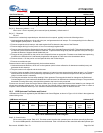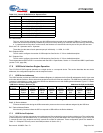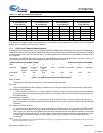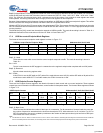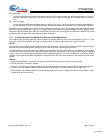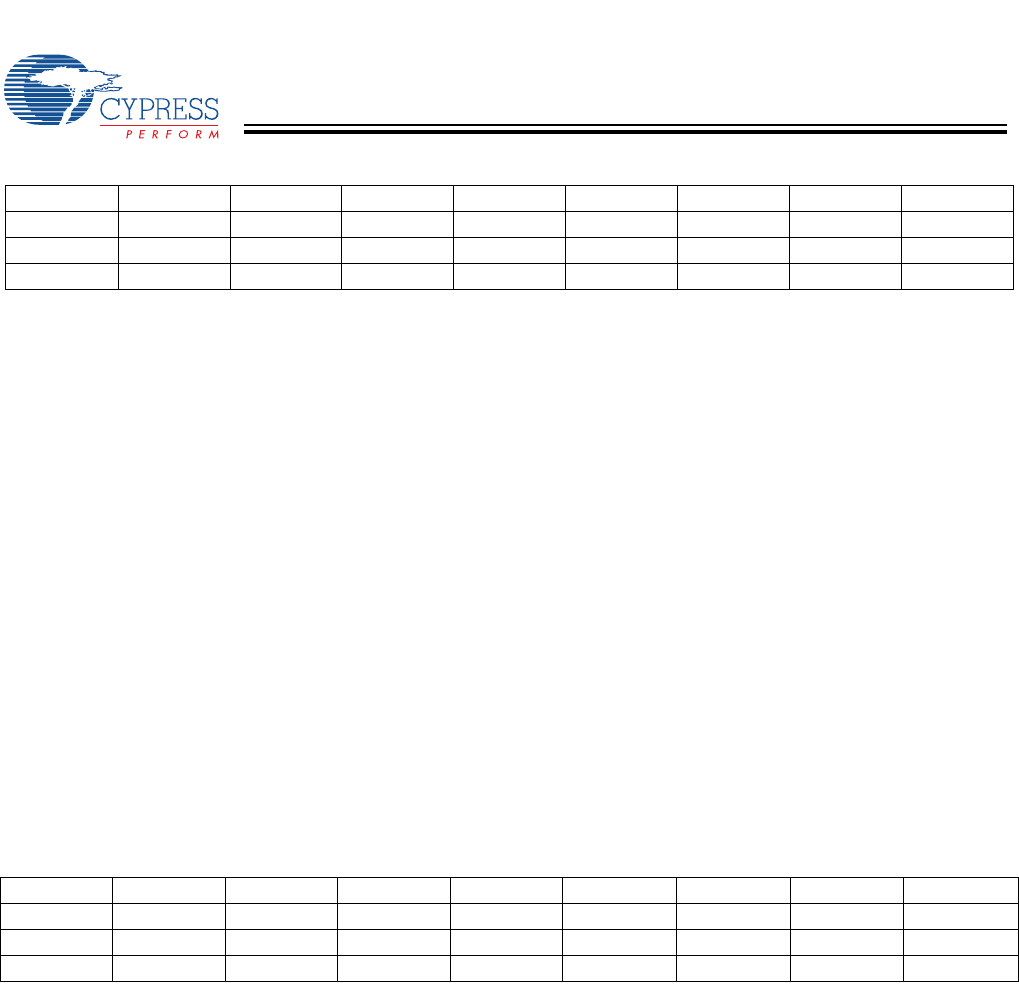
CY7C65113C
Document #: 38-08002 Rev. *D Page 30 of 49
Bit [0..3] : Port x Speed (where x = 1..4).
Set to 1 if the device plugged in to Port x is Low Speed; Set to 0 if the device plugged in to Port x is Full Speed.
Bit [4..7] : Reserved.
Set to 0.
The Hub Ports Speed register is cleared to zero by reset or bus reset. This must be set by the firmware on issuing a port reset.
The Reserved bits [4..7] should always read as ‘0.’
16.2 Enabling/Disabling a USB Device
After a USB device connection has been detected, firmware must update status change bits in the hub status change data
structure that is polled periodically by the USB host. The host responds by sending a packet that instructs the hub to reset and
enable the downstream port. Firmware then sets the bit in the Hub Ports Enable register (Figure 16-3), for the downstream port.
The hub repeater hardware responds to an enable bit in the Hub Ports Enable register (Figure 16-3) by enabling the downstream
port, so that USB traffic can flow to and from that port.
If a port is marked enabled and is not suspended, it receives all USB traffic from the upstream port, and USB traffic from the
downstream port is passed to the upstream port (unless babble is detected). Low-speed ports do not receive full-speed traffic
from the upstream port.
When firmware writes to the Hub Ports Enable register (Figure 16-3) to enable a port, the port is not enabled until the end of any
packet currently being transmitted. If there is no USB traffic, the port is enabled immediately.
When a USB device disconnection has been detected, firmware must update status bits in the hub change status data structure
that is polled periodically by the USB host. In suspended mode, a connect or disconnect event generates an interrupt (if the hub
interrupt is enabled) even if the port is disabled.
Bit [0..3] : Port x Enable (where x = 1..4)
Set to 1 if Port x is enabled; Set to 0 if Port x is disabled
Bit [4..7] : Reserved.
Set to 0.
The Hub Ports Enable register is cleared to zero by reset or bus reset to disable all downstream ports as the default condition.
A port is also disabled by internal hub hardware (enable bit cleared) if babble is detected on that downstream port. Babble is
defined as:
• Any non-idle downstream traffic on an enabled downstream port at EOF2.
• Any downstream port with upstream connectivity established at EOF2 (i.e., no EOP received by EOF2).
16.3 Hub Downstream Ports Status and Control
Data transfer on hub downstream ports is controlled according to the bit settings of the Hub Downstream Ports Control Register
(Figure 16-4). Each downstream port is controlled by two bits, as defined in Table 16-1 below. The Hub Downstream Ports Control
Register is cleared upon reset or bus reset, and the reset state is the state for normal USB traffic. Any downstream port being
forced must be marked as disabled (Figure 16-3) for proper operation of the hub repeater.
Firmware should use this register for driving bus reset and resume signaling to downstream ports. Controlling the port pins through
this register uses standard USB edge rate control according to the speed of the port, set in the Hub Port Speed Register.
Hub Ports Speed Address 0x4A
Bit # 76543210
Bit Name Reserved Reserved Reserved Reserved Port 4 Speed Port 3 Speed Port 2 Speed Port 1 Speed
Read/Write R/W R/W R/W R/W R/W R/W R/W R/W
Reset 00000000
Figure 16-2. Hub Ports Speed
Hub Ports Enable Register Address 0x49
Bit # 76543210
Bit Name Reserved Reserved Reserved Reserved Port 4 Enable Port 3 Enable Port 2 Enable Port 1 Enable
Read/Write R/W R/W R/W R/W R/W R/W R/W R/W
Reset 00000000
Figure 16-3. Hub Ports Enable Register
[+] Feedback



